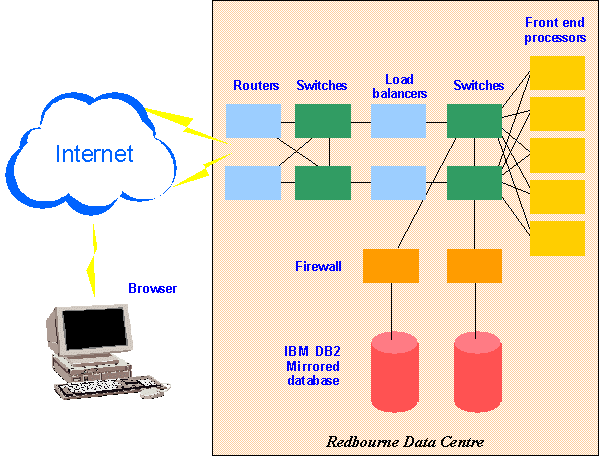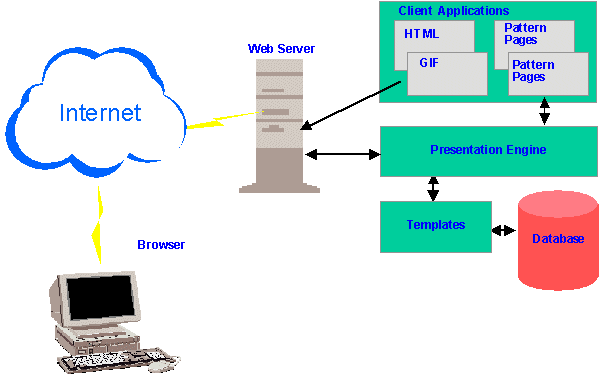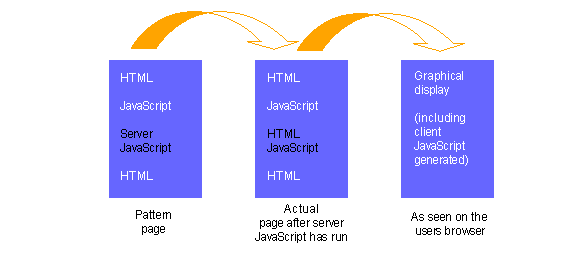Whitebeam Environment Overview
Whitebeam Environment - Redbourne Case StudyRedbourne created the Whitebeam environment - and have harnessed the architecture to build a sophisticated operational environment. The resulting hosting environment is specifically suited for the hosting of mission critical e-business applications. Redbourne Integration Partners develop, test and implement applications on behalf of their clients within the Redbourne environment - a resilient implementation of a Whitebeam environment. Authorised end users can use these applications over the Internet using any web browser. The Redbourne example is a good illustration of what can be achieved using the Whitebeam architecture. Below you will find some information on what Redbourne has accomplised.  InternetThe Internet can be considered a global interconnection of host computers over a TCP/IP network. End users gain access to the Internet via an ISP, typically by dialling a local telephone number. This local connection automatically gives end users access to products or services worldwide. BrowserThe browser is the end user application responsible for displaying the pages constructed by web servers. A user can request a web page by keying an appropriate URL (Uniform Resource Locator) or address. The location of the resource is resolved by the Internet. Data CentreApplications hosted within the Redbourne Data Centre are available via the Internet. The Redbourne data centre is physically located in a high security data centre in London. Redbourne provides a resilient high bandwidth connectivity service that is independent of any ISP and has multiple links to the Internet via LINX (London INternet eXchange). LINX is a small private network operated by tier one ISPs that routes Internet traffic through the UK when it originates from and is destined for the UK. This improves domestic response times and releases bandwidth for international traffic. Whitebeam System ArchitectureRobust e-business applications can be quickly developed and deployed using the Whitebeam system. Such applications can leverage the core capabilities of the Whitebeam architecture, developed and tested originally by Redbourne, to implement bespoke and/or complex business processes through simple application programming interfaces or APIs.  The 'Whitebeam' Open Source e-business development environment is essentially a set of co-operating software components hosted at the Redbourne Data Centre. These software components play a key role in delivering application services to Redbourne partners and their clients. Web ServersWhitebeam runs as a loadable module in the industry standard Apache Web Server software. The Web Server is responsible for serving web pages using the HTTP protocol (and the secure variant, HTTPS) over the Internet in response to URLs keyed by a user or generated by a client application. Redbourne operates a number of Web Servers for load balancing. A configuration file defines how the Web server processes user requests based upon the received URL. Apache is configured to handle requests for static content and to delegate requests for dynamic content to Whitebeam's Presentation Engine. Client ApplicationsEach client application is essentially a set of files. These files will typically be a mixture of content types (e.g. HTML, presentation pages, gifs and libraries). Presentation Pages are files that define any mixture of Redbourne dynamic content and normal static content. Presentation EngineThe Whitebeam Presentation Engine does the work of 'executing' the Presentation Pages that form the UI to the client application. The Presentation Engine finds and executes the Presentation Page that corresponds to a specific requested URL and dynamically generates a web page that is then delivered, to the requesting browser.  Each Presentation Page can contain server-side JavaScript, HTML/XML, and (client-side) JavaScript code. The Presentation Engine parses the page to identify and process Whitebeam XML (eXtensible Mark-up Language) tags. XML tags convey document mark-up information to the Presentation Engine and to also define interfaces to back-end Templates. The Presentation Engine validates and executes any server-side JavaScript that may include interactions with Redbourne Templates. TemplatesWhitebeam has a number of templates that individually encapsulate a number of business, system and process models. Templates are the software components that fulfil the dynamic behaviour and content of e-business applications through interactions with the Whitebeam database. Whitebeam Templates are designed as shared software components that execute core e-business functions and processes. An e-business application can combine the behaviours of any number of Whitebeam Templates to formulate complex business processes. Whitebeam Templates, developed in a rigorous environment by skilled technicians, abstract complex data management and integrity into simple interfaces. As such, Whitebeam Templates form the basis for rapidly developing and deploying robust e-business applications. The interface to each Whitebeam Template is defined within the Whitebeam 'Resource Object Model' (ROM) that is similar to the common browser Document Object Model (DOM). The ROM is accessible from server-side JavaScript. The ROM has a top-level parent object, rb (resource base), whose immediate child objects typically map onto Whitebeam Templates. DatabaseData is stored in the Open Source PostgreSQL database. |

